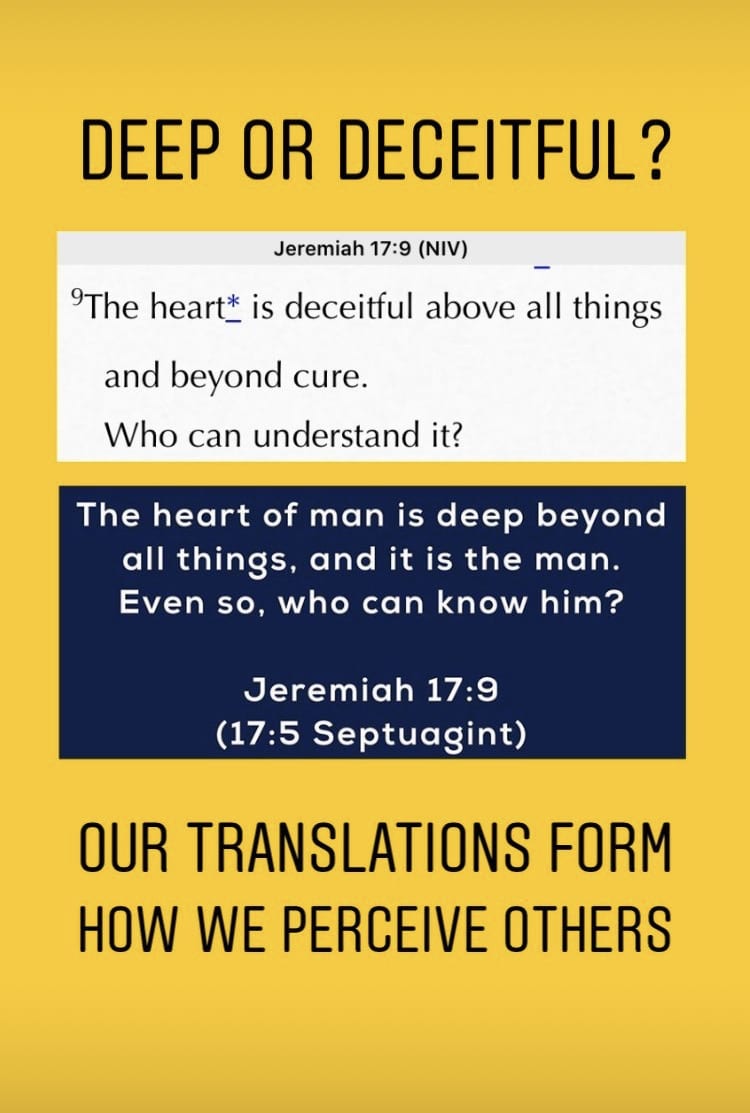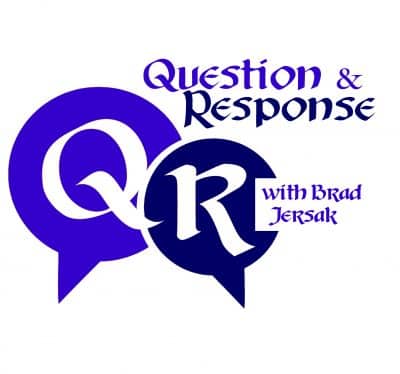Gospel Before Translation (pt. 1/3) – Brad Jersak
Reader’s Question: What Translations Do You Prefer?
Response: With all the English Bible translations available, most readers tend to pick a favorite based on either readability or accuracy.
When reading the Old Testament, I prefer Robert Alter’s translation, The Hebrew Bible, as it blends accuracy with style beautifully, and The Orthodox Study Bible, because its OT section is based on the Septuagint (LXX), the Greek version of the Hebrew canon translated before Christ and most popular among NT authors who cite it.
When reading the New Testament, I love NT Wright’s Kingdom New Testament because of its readability and David Bentley Hart’s New Testament because of its accuracy. My five semesters of Greek enabled me to know for certain that I don’t know Greek. So I read all these versions side by side with gratitude.
Gospel Before Translation: That said, for the first Christian interpreters, before trying to translate the Bible, as if one could do so objectively, they established in their hearts the gospel revelation they had received through Jesus Christ and his apostles. Apart from that gospel, the Scriptures could not be understood, much less translated, with the veil that hides their spiritual meaning (2 Cor. 3). Indeed, Christians could only regard the Hebrew Scriptures as “inspired” in the illuminating light of who Christ was and what he taught. That means the gospel formed and affected their translation work while modern translators pretend to be unbiased by theology (when of course they are).

In this brief series, I will offer three examples of how Bible translations both form and are formed by the gospel we preach. In this installment, I give you exhibit A, from Isaiah 53, that famous chapter that prefigures the crucifixion of Jesus Christ:
To the right, let’s look at verse 10 in the KJV, the NIV and the LXX (Septuagint):
The first two versions depict God fulfilling his will and even finding pleasure in crushing or bruising the suffering servant. This may serve the vision of penal substitutionary atonement, but it’s a galaxy away from the nature of God revealed in Jesus. Indeed, that use of Isaiah 53 never comes up among NT authors.
The LXX reads and translates the Hebrew text differently–dramatically so. Rather than “bruise” or “crush,” they use the Greek word, katharisai, which the NT uses many times of Jesus’ ministry of healing. Its literal meaning is to “cleanse” or “purify,” as when Jesus “cleansed” the leper in Matthew 8:3.
How is it that God is seen to cleanse the wound of the suffering servant, especially if that is Jesus? And what is the wound? Aside from the obvious (raising Christ from the dead), we can see an atonement theology at work here that has nothing to do with a retributive transaction. Rather, in his humanity, Christ takes on the wound of Adam (all the effects of the fall) and his Father cleanses the human race in the body his Son. Not through punishment but through the healing touch of divine love. This matters because a gospel-informed translation into English now sees God as a divine healer rather than a cruel punisher.
In other words, translations impact our view of God (and are influenced by our view of God). In part two, we will see how they also affect our view of humanity.












 Plain Truth Ministries | Box 300 | Pasadena, CA 91129-0300
Plain Truth Ministries | Box 300 | Pasadena, CA 91129-0300

